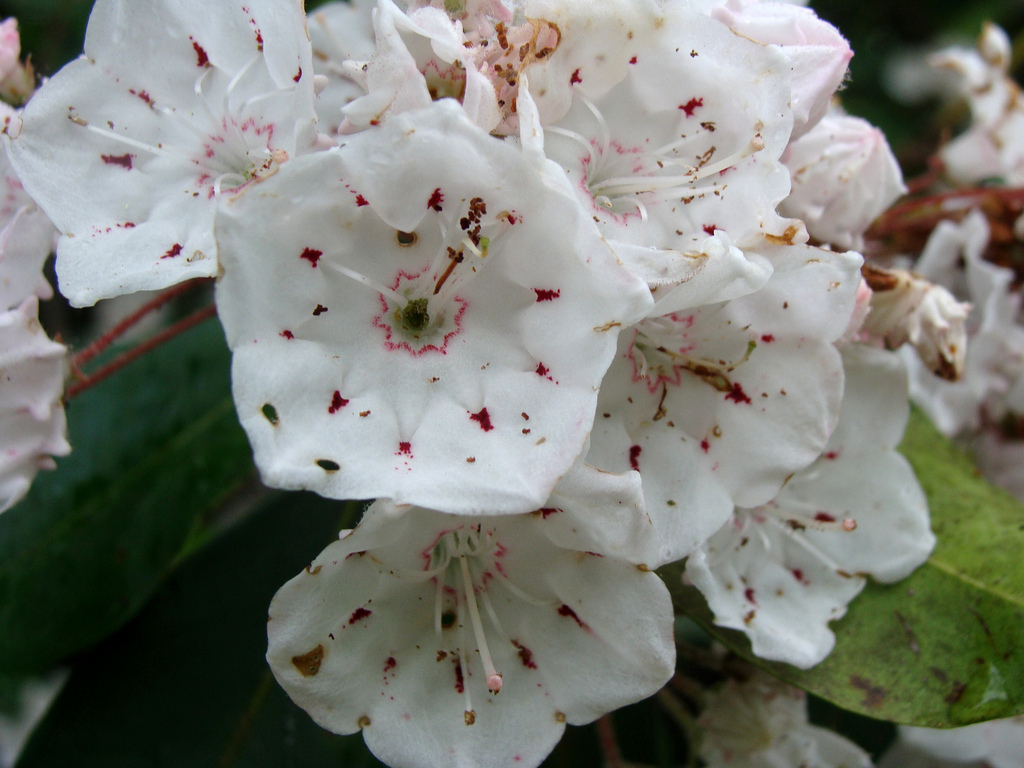Peninsula Trail
Bench 1. Plants Around You
This is the beginning of the Peninsula Trail loop. Notice how the woods become more open from here to the tip of the peninsula. Thin, sandy, and rocky soil, active beaver lodges, and occasional flooding and silting of the reservoir have worked together to create several unique habitats for a number of plants not found elsewhere in the Natural Area. Keep a lookout for standing dead trees that were killed when girdled by beavers. These trees are good habitat for woodpeckers. You may notice other trees, still living, that have a protective barrier of wire mesh to shield them from beavers. A few years ago, the beavers abandoned their lodges and moved on, now paying only infrequent visits. As a result, this area may not remain so open in the future.
As you walk the trail, notice the plants around you. Mountain laurel is a large shrub that grows densely throughout the peninsula. Blooming in May, its pinkish-white blossoms have “catapulting” stamens held in tension by petals. Visiting bees inadvertently cause the spring-like stamens to release, spraying the insect with pollen, thus facilitating cross-pollination. Every part of this shrub is poisonous if eaten by humans, including honey made from its nectar. Settlers called mountain laurel "Ivy" because it reminded them of the ivy in their homeland. Ivy Creek is named for this shrub that thrives along its waterways.
Haircap moss is one of the many mosses found all along the edge of the trail here. With rain, dry mats of this two-inch moss transform to resemble vibrant miniature fir forests. Mosses, lichens and ferns are examples of non-flowering plants which reproduce by spores rather than seeds.

